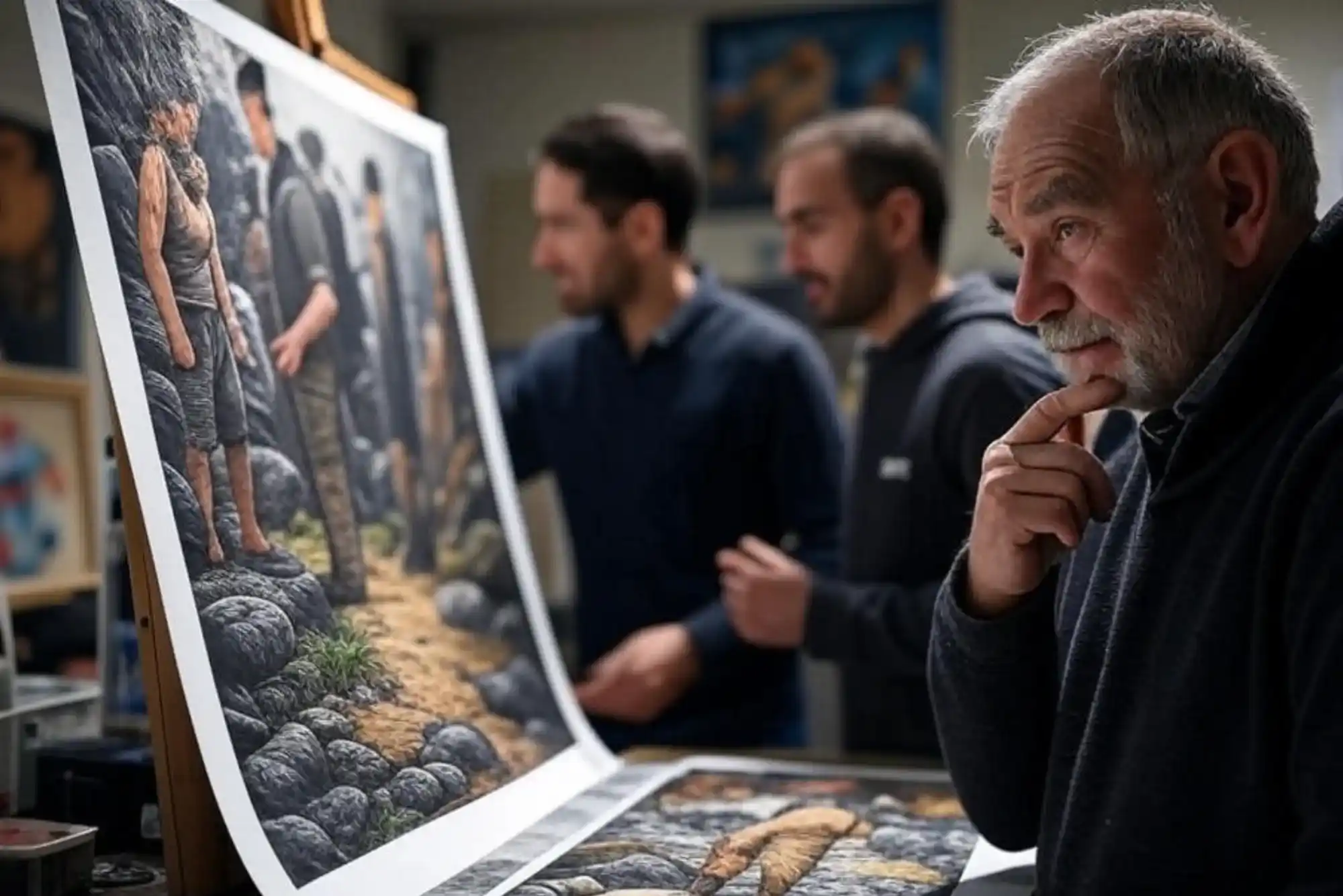When fans of manga and fantasy storytelling speak in hushed tones of reverence, Berserk inevitably comes up. While its brutal story and complex characters are undoubtedly a draw, it’s the art style—painstaking, evocative, and deeply atmospheric—that often turns casual readers into lifelong devotees. Kentaro Miura, the genius behind Berserk, didn’t just draw manga; he carved a visual legacy that still influences countless creators today.
In this article, I want to explore why Berserk’s art is so revered, especially within the realms of fantasy and manga, and why it continues to captivate even decades after its debut. Whether you’re a longtime fan or someone curious about diving into this iconic work, the visual experience of Berserk is something that can’t be overstated.
The Unparalleled Detail in Berserk’s Panels
At first glance, what immediately strikes any reader of Berserk is the sheer detail. From the sweeping medieval architecture to the intricacies of armor and weapon design, Miura’s work is almost overwhelming in its visual complexity. Each panel is like a canvas, and it’s rare to find blank space or lazily drawn background elements. Everything is meticulously crafted to make the world feel lived in, harsh, and tangible.
This is especially important in fantasy manga, where the world-building must feel immersive. Berserk excels because you don’t just read about Guts wandering through towns, forests, and battlefields—you feel like you’re there with him. The dirt on his boots, the worn leather of his armor, the mist creeping over a haunted lake—it’s all drawn with stunning realism.
Miura was known to spend countless hours refining even the smallest background element, and it shows. In many ways, his obsession with detail helped define a new standard of excellence in manga artwork, particularly in the fantasy genre.
Emotion Rendered in Every Line
It’s not just the physical environments that are drawn with care—it’s the people, their faces, and most importantly, their emotions. In a series as emotionally heavy as Berserk, the ability to convey subtle expressions is crucial. Miura had an unmatched talent for drawing fear, rage, sorrow, and even numbness, making every panel resonate on a deeply human level.
Guts, the series’ protagonist, wears his trauma on his face, and Miura never shied away from portraying his pain in raw, sometimes uncomfortable ways. A furrowed brow or a vacant stare could say more than a page of dialogue. That kind of visual storytelling is rare even among the top manga artists, and it’s one of the reasons why fans remain so emotionally attached to the characters.
In fantasy, where characters often deal with impossible odds and supernatural horrors, grounding them in realistic human emotion is key to keeping readers invested. Berserk doesn’t just show epic battles; it shows the cost of those battles on the human soul.
Dynamic Action That Redefines Battle Scenes
Another reason the art in Berserk is so iconic is Miura’s ability to capture motion in static images. Action scenes—especially sword fights—are notoriously difficult to draw in manga. Many artists struggle to convey weight, timing, and impact in a way that feels satisfying. Miura, on the other hand, made every swing of Guts’ massive Dragonslayer sword feel like an event.
The way he drew action had a kinetic energy that few could match. He used dynamic angles, intelligent use of blur lines, and powerful compositions to show chaos without making it confusing. Every blow landed with consequence. Every creature Guts faced—be it apostle, demon, or man—was rendered with enough menace and weight to make the battle feel like life and death.
For fans of fantasy, where epic battles are part of the appeal, this level of visual mastery is a gift. You’re not just watching a fight; you’re living through it, panel by panel.
A Dark Fantasy Aesthetic Like No Other
Let’s talk about tone, because it’s central to Berserk’s art style. This is a dark fantasy, and Miura leaned fully into the aesthetic. Gothic spires, plague-ridden villages, horrific monsters, and twisted dreamscapes fill the pages. You’ll find visual influences from medieval European art, horror iconography, and even surrealist nightmare visions.
This blend of historical realism and high-concept horror is one of the things that sets Berserk apart from other manga, especially in the fantasy category. While many fantasy manga lean toward brighter or more stylized looks, Berserk roots itself in the grotesque and the sublime.
It’s this tone—rich, haunting, and unforgiving—that makes the art so integral to the story. The visual darkness mirrors the thematic darkness. Without this synergy, Berserk simply wouldn’t hit as hard.
Monumental Worldbuilding Without Words
Miura had a rare talent for telling stories without relying too heavily on exposition. His artwork showed the world instead of just explaining it. A dilapidated city with broken statues and bloodstained walls told you everything you needed to know about what had happened there. A sprawling battlefield filled with corpses and burning tents didn’t need dialogue to convey tragedy.
This technique is especially powerful in fantasy manga, where exposition can often bog down the pacing. In Berserk, the world unfolds visually. You learn its rules, its history, and its dangers through imagery as much as through narrative. This makes the experience immersive in a way few manga can replicate.
Artistic Evolution Over the Years
One of the most fascinating aspects of reading Berserk over the years is watching Miura’s art evolve. Early volumes already show impressive skill, but by the time the story reaches the Golden Age arc and beyond, his artistry ascends to another level. The shading becomes richer. The character designs mature. The compositions grow more ambitious.
Even seasoned manga artists tend to plateau at a certain point in their careers, but Miura kept pushing the boundaries. Each arc felt visually distinct yet cohesive with the world he had built. His consistency and growth are part of what makes Berserk so rewarding to read and reread.
Influence on Manga and Beyond
It’s no exaggeration to say that Berserk’s art has influenced generations of artists, both inside and outside the manga world. Major creators in anime, games, and comics have cited Miura’s work as a source of inspiration. The visual style of games like Dark Souls, Elden Ring, and Bloodborne owe a huge debt to Berserk. Even popular anime like Attack on Titan show echoes of Miura’s detailed worldbuilding and character expressions.
This influence speaks volumes. Great art doesn’t just impress—it inspires. And Miura’s legacy is etched into the DNA of modern fantasy storytelling.
Berserk: A Testament to Visual Storytelling
When we ask why the art style in Berserk is so highly praised, we’re not just talking about pretty drawings. We’re talking about visual storytelling at its highest level. Miura didn’t use art as a supplement to the narrative—he used it as the narrative. It shaped tone, deepened character arcs, and built a world so unforgettable that it feels real.
In the realm of fantasy manga, where imagination runs wild and visuals are key to immersion, Berserk stands tall as a towering achievement. It’s brutal, beautiful, and haunting in equal measure. It reminds us of what manga as an art form can achieve when pushed to its limit.
For fans of fantasy who crave depth, darkness, and daring visuals, Berserk is more than a recommendation—it’s a rite of passage.
Whether you’re flipping through your first volume or revisiting the Eclipse for the tenth time, one thing remains true: the art in Berserk will leave a mark on you. Just as it did on the world of manga.
Let me know if you’d like a version with embedded image alt tags or schema markup for SEO.





